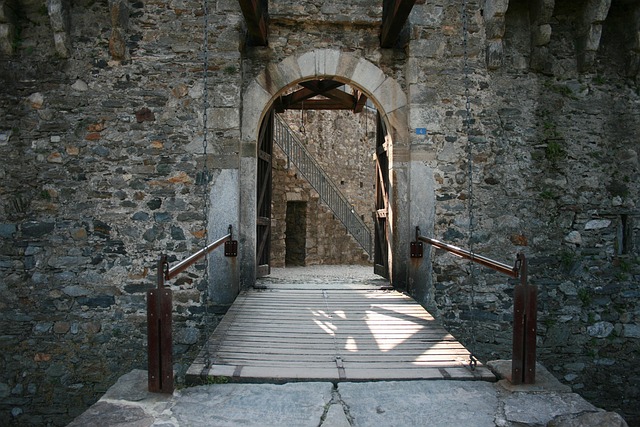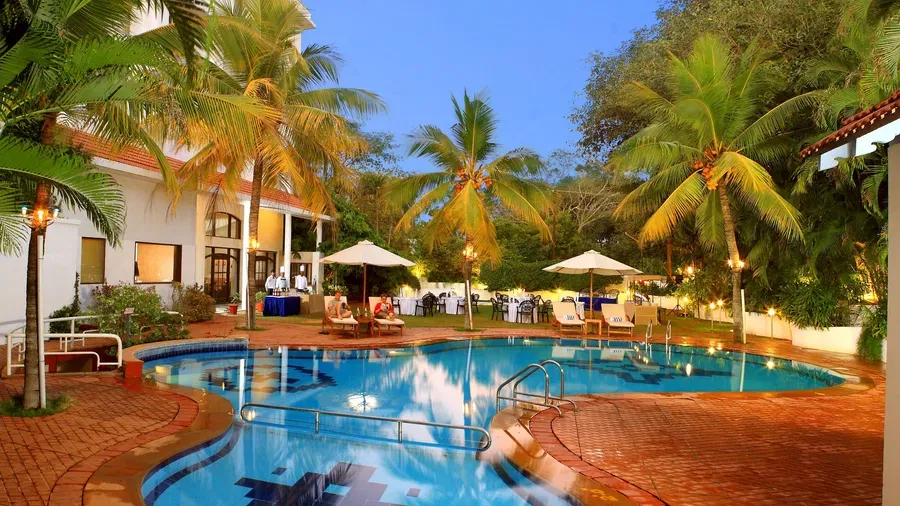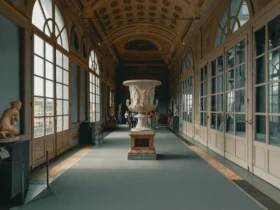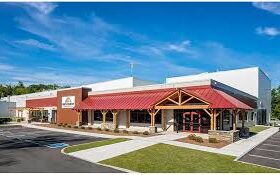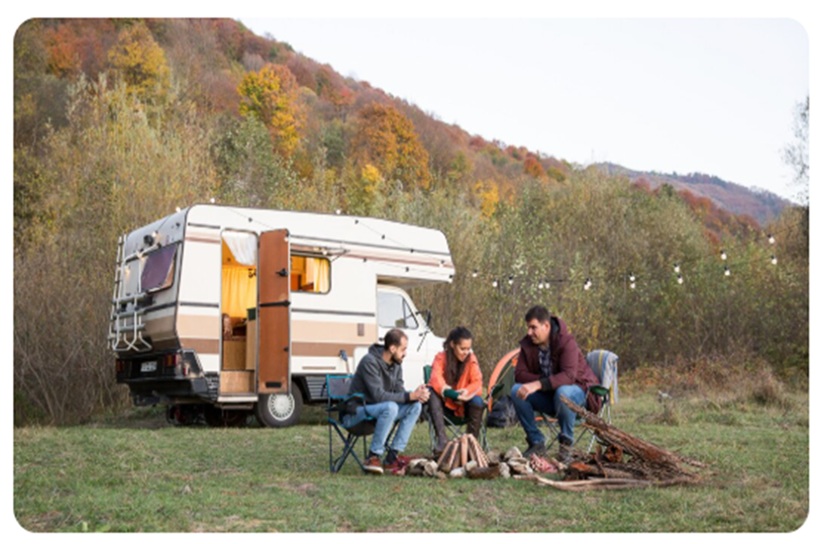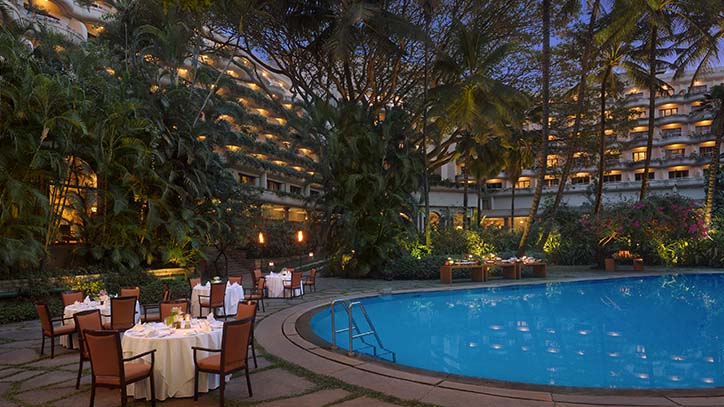Where the Alps meet the palm trees of the Lago Maggiore, two very different fortresses stand guard over history.
High above the Ticino valley, the Castles of Bellinzona rise proud and intact — stone symbols of Swiss strength.
Far to the south, the Castelli di Cannero drift like ghosts on the lake, their ruins shimmering on the water near the Italian town of Cannobio.
Both are part of the same region, yet they couldn’t be more different: one commands the mountains, the other belongs to the waves.
Together they tell a single story — of borders, battles, and the beauty that remains long after empires fade.
Bellinzona – Switzerland’s Stone Crown
A Fortress Between Mountains and Empires
The city of Bellinzona, capital of Ticino, has guarded the Alpine crossroads for more than eight centuries.
In medieval times, whoever controlled Bellinzona controlled the trade between northern Italy and the Swiss plateau.
To defend this precious passage, rulers built an extraordinary chain of fortifications: Die Burgen von Bellinzona: Castelgrande, Montebello, and Sasso Corbaro, linked by massive walls that once surrounded the entire valley.
These castles were never decorative. They were the iron gates of the Alps — a living defense system between Milan and the Confederation.
Their sheer scale earned Bellinzona a place on the UNESCO World Heritage List in 2000.
Castelgrande – The Heart of Power
Perched on a rocky hill above the old town, Castelgrande is the largest and oldest of the three.
Its foundations date back to Roman watchtowers; its current towers and walls belong to the 13th–15th centuries.
Today, glass elevators and panoramic paths make access easy, but stepping inside still feels like entering another age.
Visitors can walk the ramparts, explore the museum’s archaeological rooms, and gaze south toward Italy.
From here, the geometry of the fortress reveals its purpose — every stone placed to control the valley, every tower aligned with the next line of defense.
Montebello and Sasso Corbaro – The Twin Watchtowers
Higher up the slopes, Montebello looks down upon the town like a hawk.
Its long, narrow walls connect the castle to the lower defenses — the perfect spot for photographers.
Above it, Sasso Corbaro commands the entire region from an isolated cliff. Built in 1479 in only six months, it shows the pure engineering genius of the Renaissance military mind.
From Sasso Corbaro’s terrace, the panorama is unforgettable: vineyards in the valley, distant glaciers to the north, and, on a clear day, the blue shimmer of Lake Maggiore to the south.
Life Inside the Walls
Unlike many European fortresses, Bellinzona’s castles are still alive.
Summer concerts, open-air theatre, and wine festivals bring locals and visitors together in the courtyards.
Children climb towers that once repelled soldiers; musicians play where soldiers once marched.
It’s history that breathes — and it makes Bellinzona one of the most atmospheric cities in Switzerland.
Cannero – Castles That Float on the Lake
A Vision Rising from the Water
Drive 50 kilometres south, cross from Switzerland into Italy near Cannobio, and the scene changes entirely.
There, off the shore of Cannero Riviera, two small islands emerge from the Lago Maggiore, crowned by stone ruins.
These are the Castelli di Cannero — ancient walls half-submerged, sunlit in summer and mist-wrapped in winter.
At first glance, they look unreal: fortresses adrift on the water, their reflections merging with clouds.
Yet they are very real — and their story is filled with piracy, revenge, and rebirth.
Pirates, Dukes, and Legends
In the early 1400s, a noble but infamous family known as the Mazzarditi seized the islands and turned them into a base for piracy.
They plundered merchant boats, raided the lakeshore villages, and defied both Milan and the Swiss Confederation.
For years, the Mazzarditi ruled the lake through terror — until 1519, when the Dukes of Milan destroyed their stronghold and built a new fortress called Rocca Vitaliana on the same rocks.
What we see today are the romantic ruins of that second castle — eroded by waves but still powerful, their towers rising directly from the water.
A Castle Reawakens
For centuries, the islands could only be admired from passing boats.
But a new restoration project, led by the Piedmont Region and the Borromeo Foundation, aims to reopen them as an open-air museum by 2025.
Visitors will soon be able to step onto the rocks, walk through the restored courtyards, and learn how the lake’s history intertwined with border conflicts and trade routes.
It will be the first time in 500 years that people can truly enter the Castelli di Cannero — a dream for historians and photographers alike.
How to Visit
Boat tours run from Cannero Riviera, Cannobio, and Verbania Intra, giving perfect views of the ruins.
Most trips include commentary about the Mazzarditi and the Borromean Islands further south.
For the best light, visit early in the morning or at sunset, when the stones glow gold against the blue of the lake.
Pair the cruise with lunch in Cannero or Cannobio, where trattorias serve risotto al persico (perch risotto) and Piedmontese wine.
For families based at camping Lago Maggiore, it’s one of the easiest and most rewarding excursions on the Italian side.
Two Fortresses, One Lake – A Tale of Contrast
| Aspect | Castles of Bellinzona | Castelli di Cannero |
|---|---|---|
| Country | Switzerland (Ticino) | Italy (Piedmont) |
| Setting | Mountain ridges above a valley | Islands rising from Lake Maggiore |
| Purpose | Alpine defense and trade control | Border fort and lake outpost |
| Architecture | Massive stone walls, towers, courtyards | Ruins of Renaissance fortress |
| Condition | Fully preserved, UNESCO heritage | Romantic ruins under restoration |
| Experience | Museums, walks, panoramic views | Boat tours, photography, legend |
| Spirit | Discipline, endurance, strength | Mystery, romance, imagination |
Together they show the duality of this region: Bellinzona represents order and precision, Cannero embodies passion and poetry.
One guards the mountains; the other belongs to the lake.
Lago Maggiore and Cannobio – The Bridge Between Worlds
The Lago Maggiore connects these two historical realms like a silver thread.
At its northern tip lies Ticino, where Bellinzona’s castles stand sentinel; further south, the lake widens into Italy, where the Castelli di Cannero rise near Cannobio.
Cannobio, with its palm-lined promenade and colourful old town, makes the perfect base to explore both.
From here, you can drive north in just over an hour to Bellinzona, spend the morning walking the castle walls, then return in the evening for dinner by the water as the Cannero ruins fade into twilight.
Why Cannobio is the Perfect Base
- Ideal location: midway between Swiss mountains and Italian islands.
- Affordable comfort: prices for hotels, restaurants, and camping are 30–50 % lower than in Switzerland.
- Lakeside living: swimming, sailing, and sunsets right outside your tent or mobile home.
- Cultural reach: easy access to Locarno, Ascona, Verbania, and Bellinzona.
Staying at Lakeview Cannobio Camping & Resort combines both sides of Lake Maggiore — Swiss-style quality and Italian hospitality.
Here you can wake to mountain reflections and end the day with pizza and wine as the lake glows silver.
Travel Tips
- Transport: regular trains link Locarno and Bellinzona; ferries run between Cannero, Cannobio, and Verbania.
- Best season: April–October for boat trips and open castles.
- Tickets: Bellinzona offers a combined museum pass for all three castles.
- Photography: morning for Bellinzona’s mountain light; evening for Cannero’s mirror-like water.
- Combine adventures: visit both in one weekend — history in the morning, legend in the afternoon.
History Meets Horizon
From the battlements of Bellinzona, the view stretches to the horizon — mountains, valleys, and the distant glint of Lake Maggiore.
From a boat beside Cannero, you look back north and see those same mountains rising behind the haze.
Between them flows the spirit of the region: strength meeting serenity, stone meeting water.
Exploring both castles is like reading one story in two languages — Swiss and Italian, fortress and ruin, memory and dream.
They remind us that borders change, but culture endures; that the same lake can reflect two worlds at once.
So whether you’re tracing medieval walls in Bellinzona, sailing past the Castelli di Cannero, or relaxing at your camping Lago Maggiore base in Cannobio, you’re walking through a living museum — one where history, nature, and imagination still share the same view.

